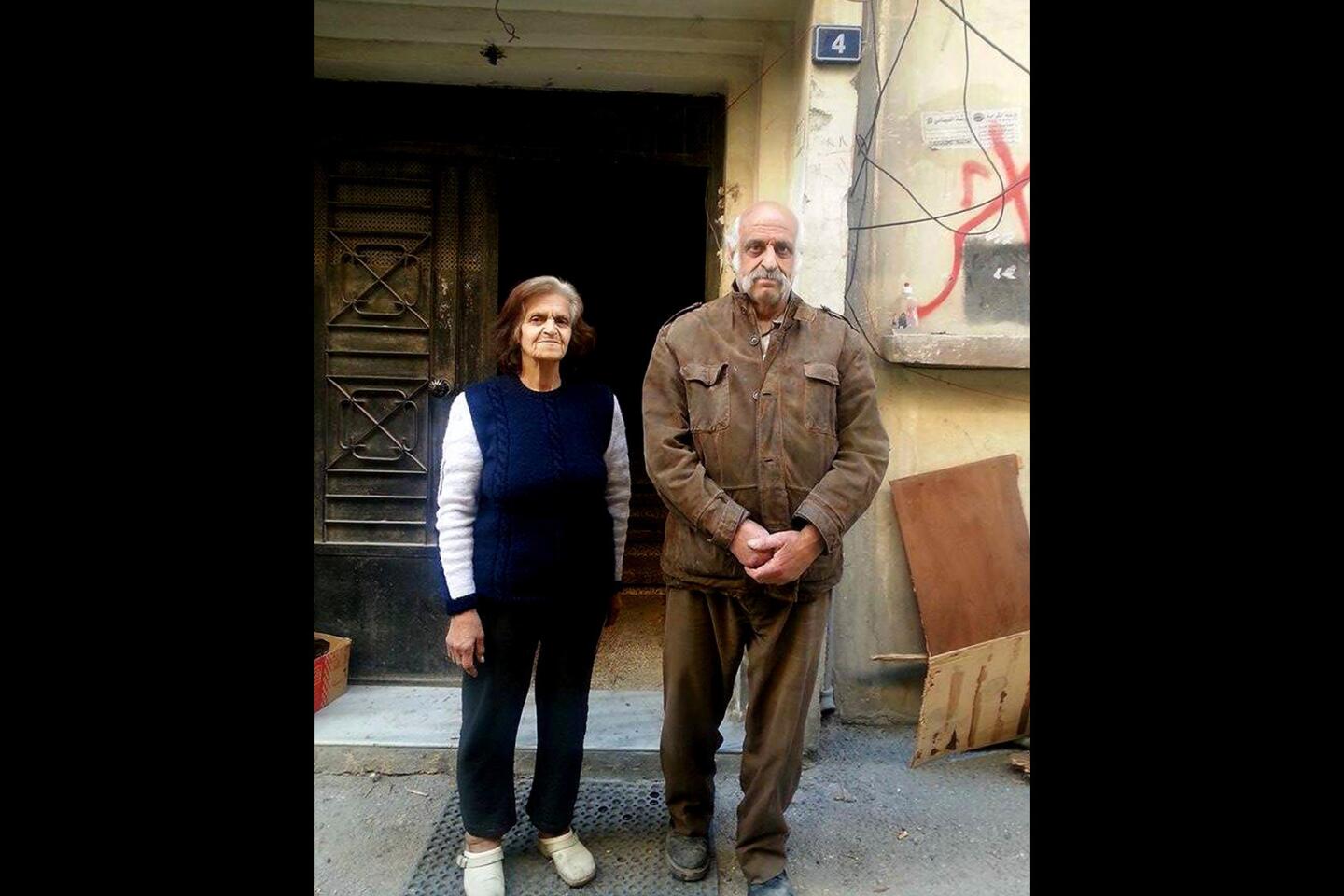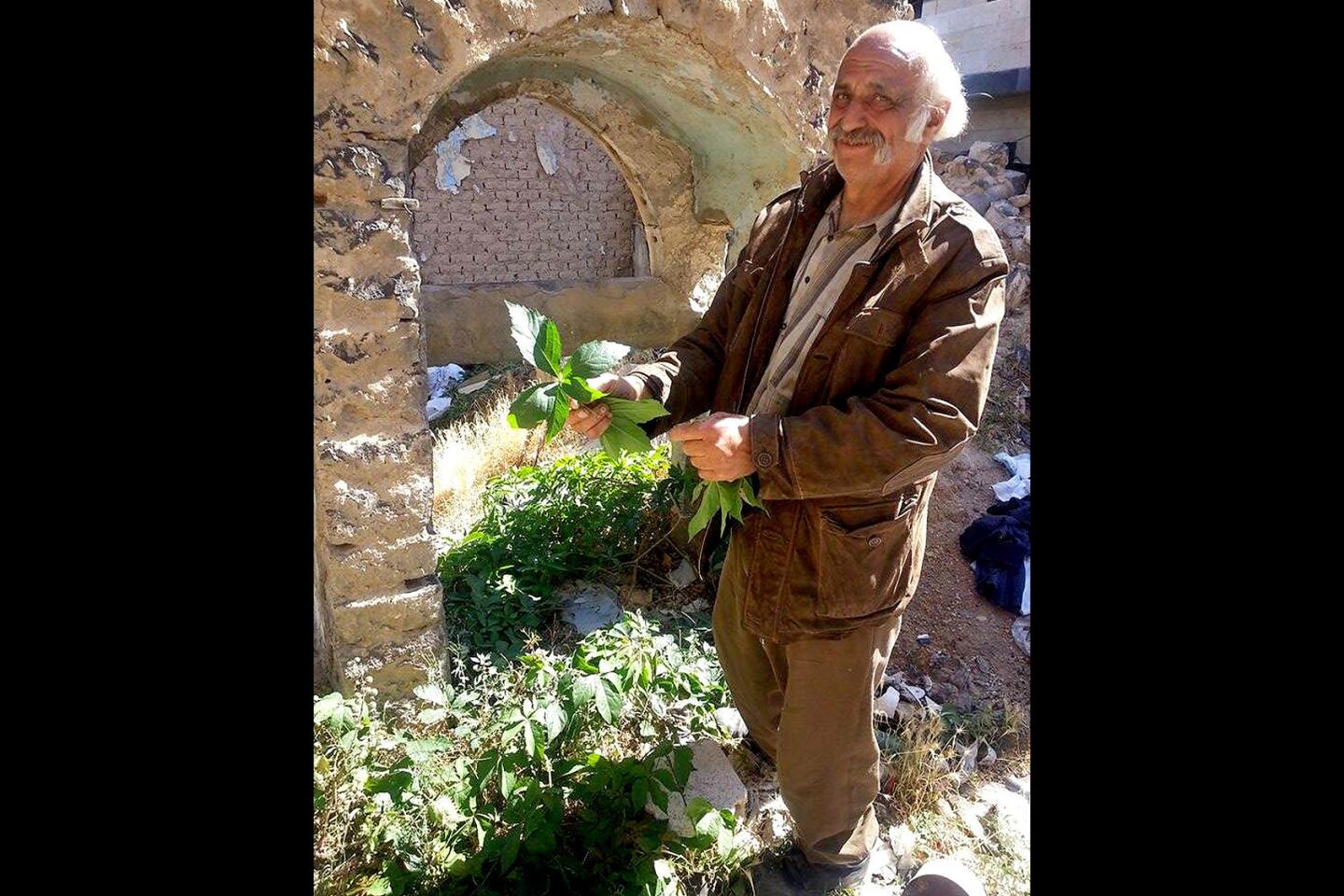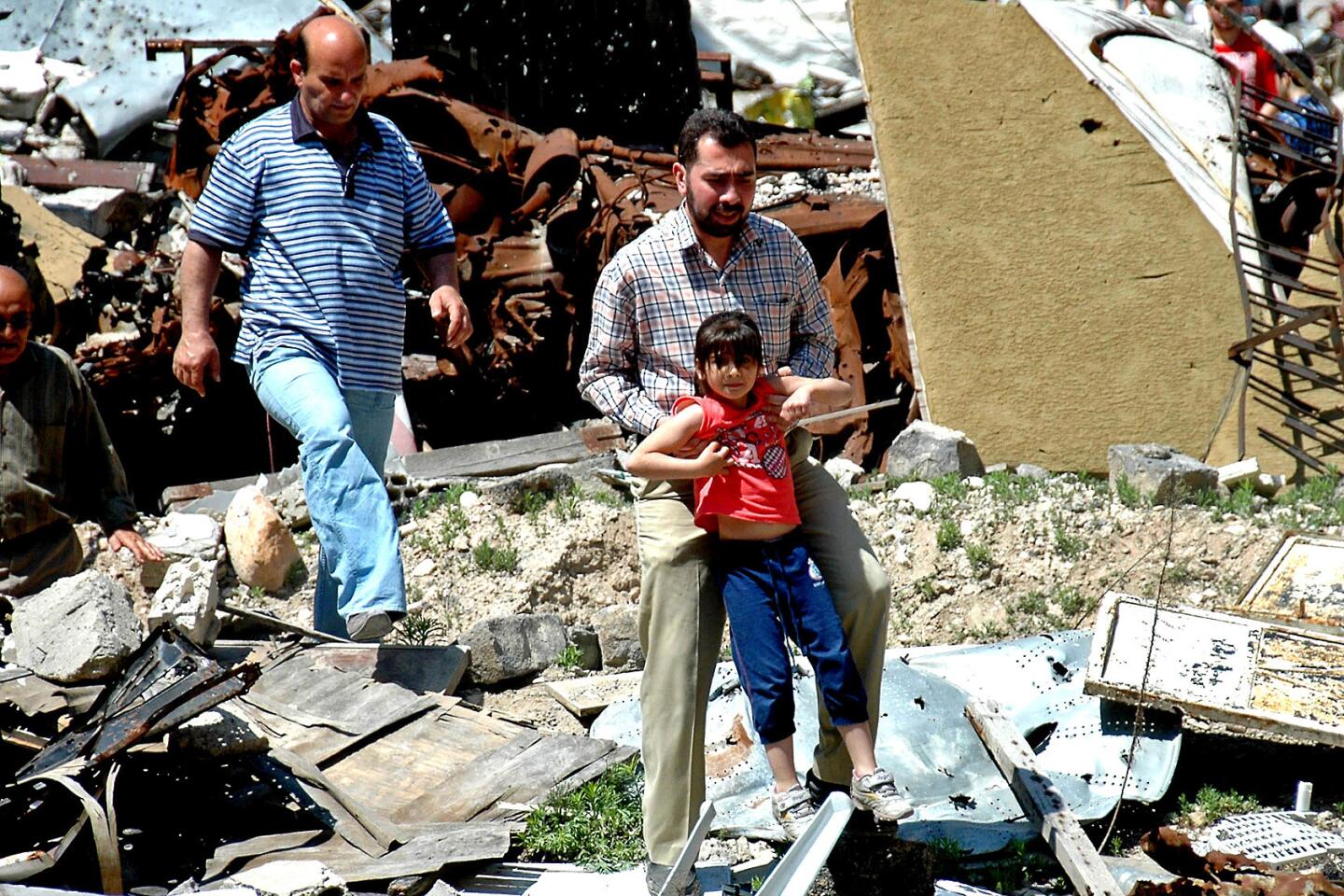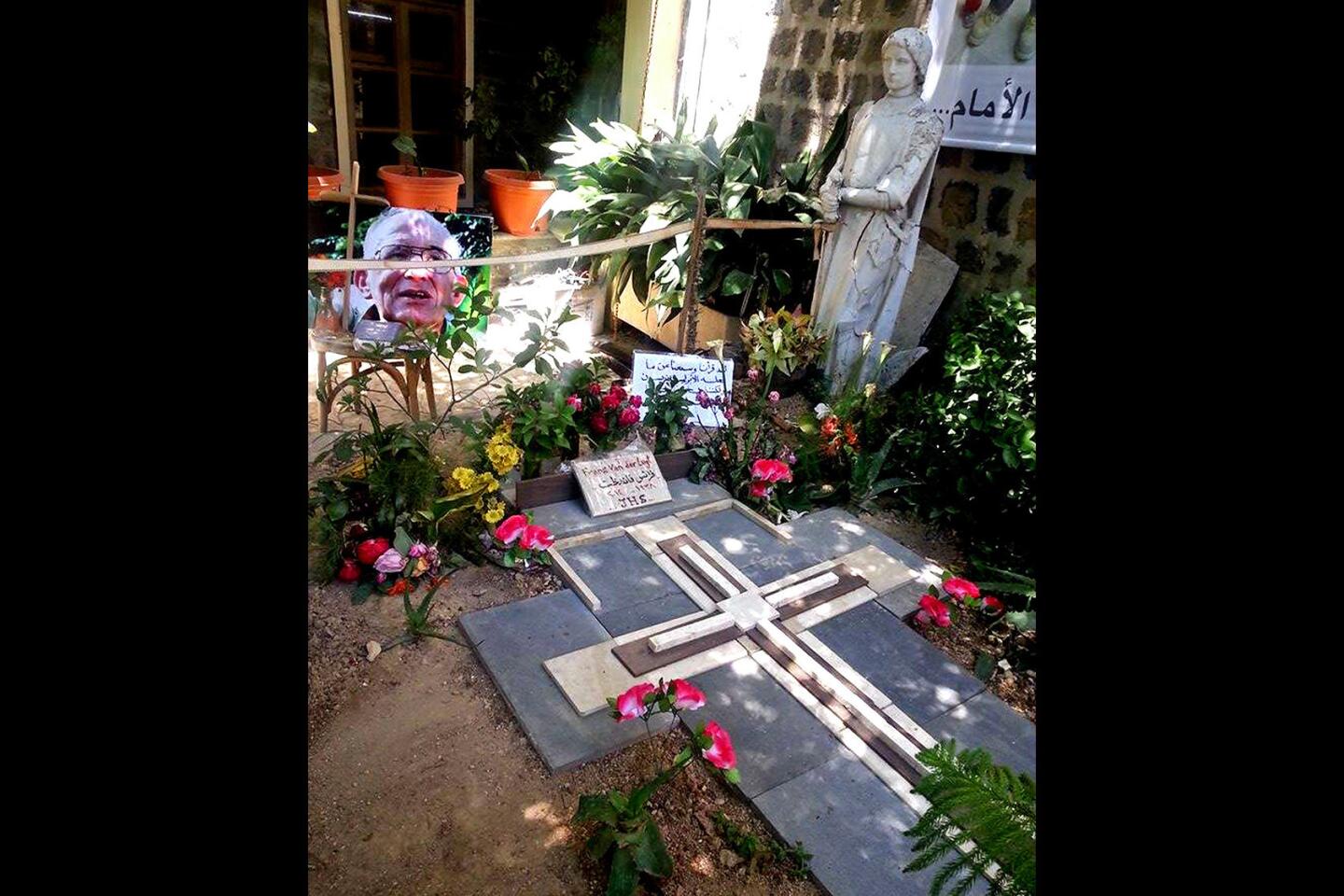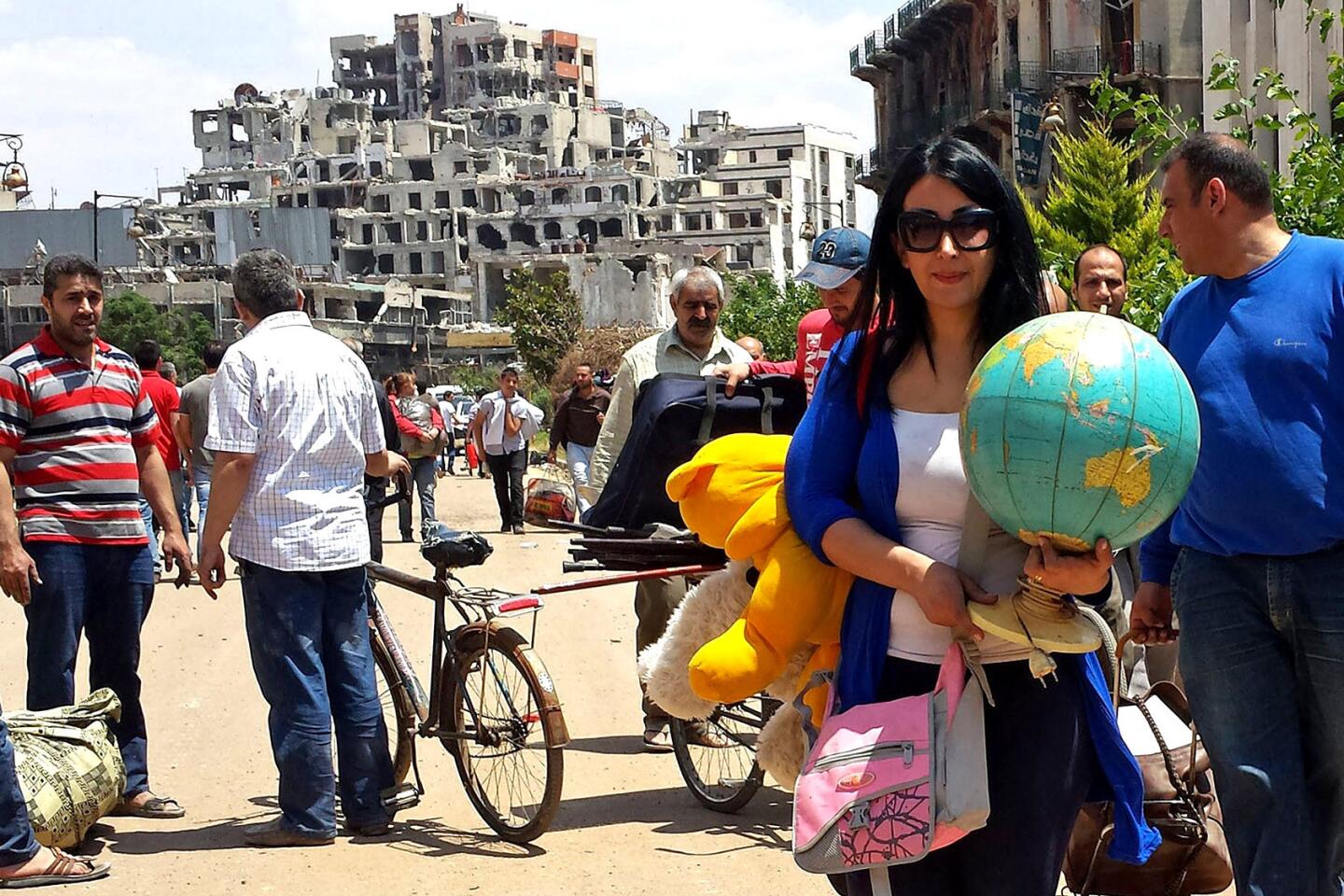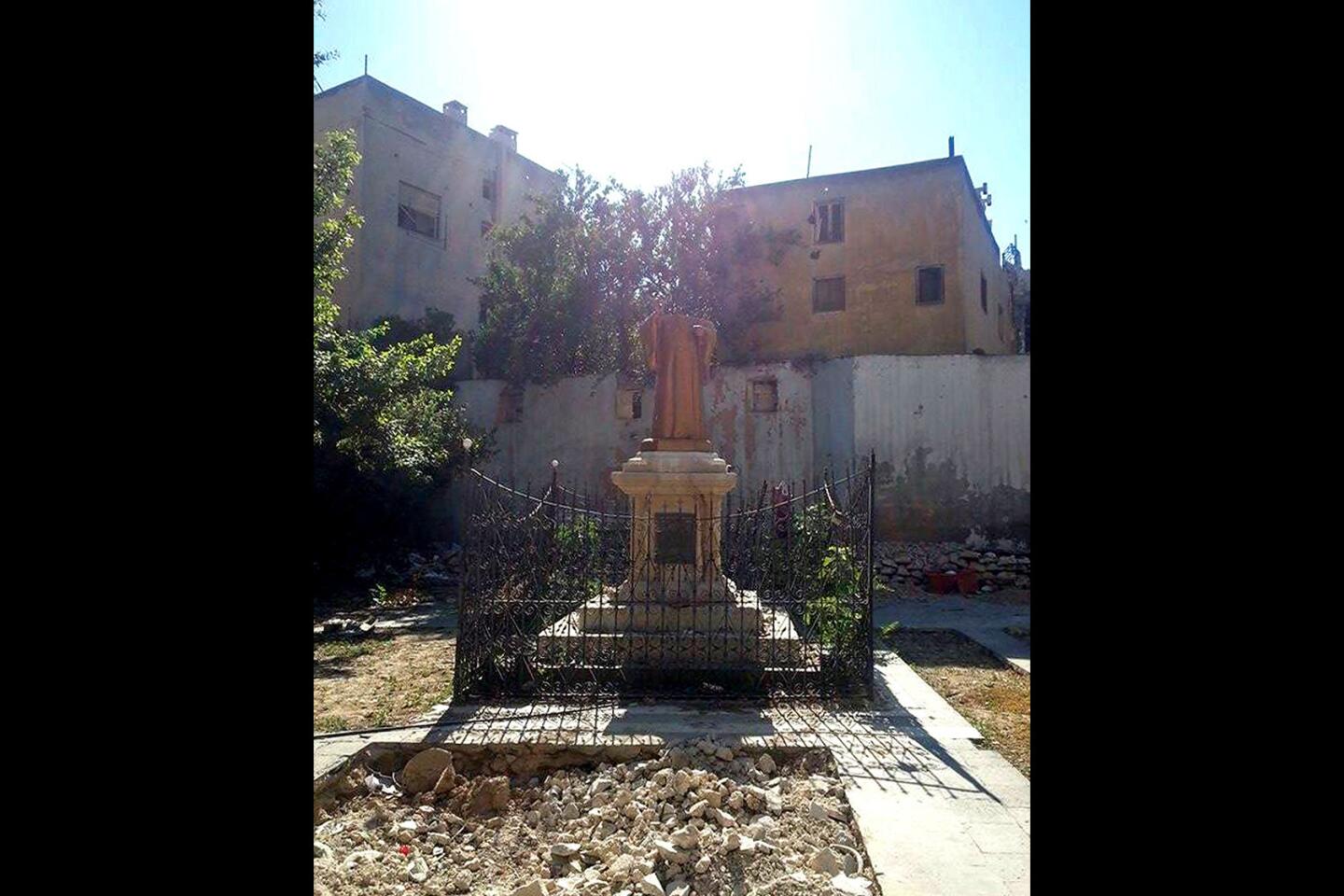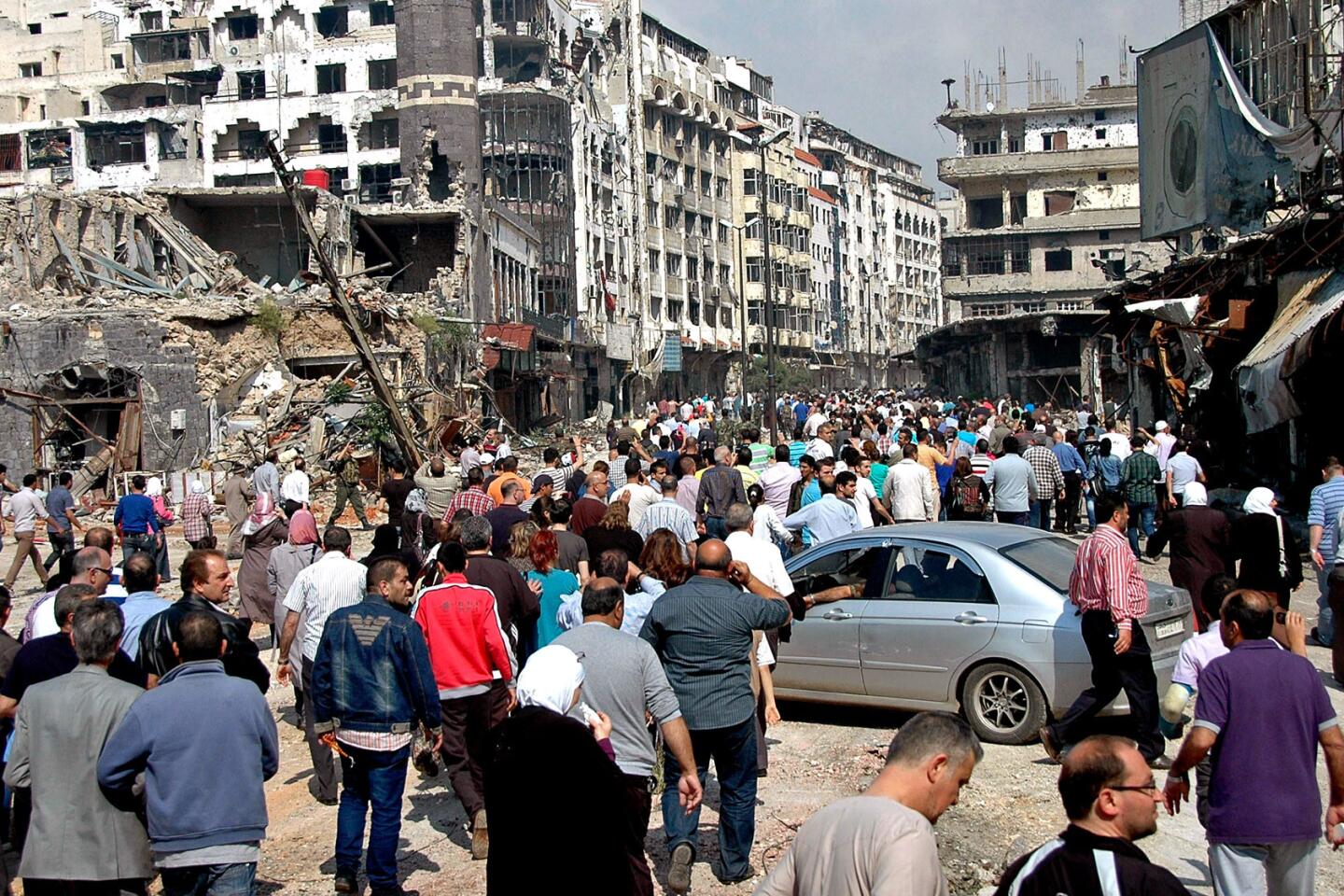Video of a dead city: This is what Syria’s devastation looks like
- Share via
Reporting from Homs, Syria — It was oddly tranquil up there on the roof of an obliterated commercial center in the Old City of Homs, once ground zero of Syria’s sanguinary conflict. A panorama of ruin spread in all directions, the ghost of a vibrant community, blown apart in body and spirit.
Empty streets sliced through rubble piles and rows of hollowed-out buildings, guarded by army checkpoints. On some thoroughfares in the nearby Khalidiya district, once a bustling urban space, weeds sprouted 4 feet high or more from cracks in the concrete, swaying in a winter breeze that wafted through empty apartments blocks.
Hardly anyone lives in Khalidiya anymore.
I took careful notes of the scene from the roof and went back down into the deserted street.
For years, refugees, aid workers and war correspondents emerging from the heart of the nearly 5-year-old Syrian civil war have brought with them grim descriptions and stark photographs of the country’s slow destruction. But they have been mere words and pictures — isolated moments in time and space.
In recent days, two new videos have been rocketing through social media. Shot by cameras mounted on drones, they glide soundlessly over block after block of what once was the city of Homs — suddenly bringing home, for many, the devastation that has forced 4 million people to flee the war.
The videos shot by news crews for the Russia Today network and a Russian drone filming company, Russia Works, depict a bleak landscape I have witnessed time after time in my periodic travels across Syria — most recently in November, when a Syrian soldier accompanied me to the heart of Homs’ Old City.
He picked up that day on the roof the shredded remains of a rocket, one of many lying about on the roof and in former offices and flats, along with countless spent bullet casings. There was also more quotidian debris: clothing and books, family photos, documents and mementos scattered about in abandoned, plundered homes that once housed the city’s mercantile elite.
Join the conversation on Facebook >>
Sandbags were scattered close to holes gouged in the walls — former sniper positions, from where the rebels who once held sway here guarded the entrances to their apocalyptic redoubt. The minarets of mosques and domes of churches were visible in the distance, testament to a time when Homs was a place where a conservative Sunni Muslim majority lived at ease with Christians and other minorities, an epoch now long gone.
Homs may be an extreme case, but the reality is that vast stretches of Syria are now fit only for the wrecker’s ball.
The drones in the videos capture the big picture, not the granular detail: the metal shutters ripped from hundreds of shops, the wooden shelves stripped for firewood, the metal safes blown up and looted. And the shrapnel holes in the roof of the old souk that allow pointillist beams of light to penetrate to the cobblestones below.
Still, Homs has an unmistakable allure, the feeling of a deeply wounded city whose residents still haven’t come to terms with the calamity that has befallen their city. And how could they?
When I first visited Homs, back in 2013, the Old City and surrounding neighborhoods were still in the hands of Islamic insurgents. The highway north to Homs from Damascus was rather dicey; sniper rounds echoed from the ruins of battleground Damascus suburbs like Qaboon and Harasta. Smoke rose from fires.
Running the gauntlet, we called it, stepping on the gas pedal and breathing deeply until we reached Homs. A deceptive veneer of normality enveloped the university district — the Syrian army had tightly sealed off the rebel-occupied Old City and adjoining areas.
Our routine was to try and get as close to the Old City as possible, jogging at times to make it harder for the snipers, and to peer into the maw of the destruction. The great hulks of sheered-off and collapsed buildings scarred with bullet holes and shell impacts resembled some dystopian, alien kingdom that had somehow emerged from the heart of the once-stolid city, Syria’s third largest, a historical commercial hub.
Before the war, Homs was known for its desert winds, religious landmarks (both Muslim and Christian) and its rich history—Homs had been an important Roman-era outpost and Byzantine center.
In Zahara, a largely pro-government neighborhood bordering the encircled Old City, residents erected cinder block walls of 10 feet or more in height to guard against the constant sniping from rebels dug in amid the rubble. People would casually relate how a relative or neighbor was shot one day on the street that we had just walked across.
In February 2014, a United Nations-brokered truce allowed humanitarian aid in to the Old City and also permitted rebels to leave and apply for an amnesty. The exiting fighters were a shambolic lot, gaunt, cold and grimy, gray blankets draping their shoulders. They wolfed down apples handed to them. They talked about the siege; of scouring for food amid shelling and bombardment; of cigarettes, a precious item, costing the equivalent of $40 each.
“We just wanted to get out,” one scraggly rebel survivor, Wassim, 23, told me at the banquet hall on the Orontes where they were gathered, declining to give his full name for security reasons. “We couldn’t stand it in there.”
The scene in the Old City three months later, in May 2014, was almost biblical in scope. The rebels had decamped; the siege was lifted. Multitudes came to see what had happened to their town, scrambling around debris piles.
Residents who had fled years before hastened back to check on homes and belongings. Most everything had been plundered. People carried away what they could -- the odd family photo or memento, a broken chair, a stove -- in baby strollers, makeshift carts and in bulging suitcases.
One dress shop owner pushed a cart full of mannequins, looking eerily like bodies. Others came seeking signs of missing loved ones, both rebels and civilians who had been kidnapped at gunpoint and taken into the bowels of the Old City, never to be seen again. Some makeshift graves were interspersed among the ruins.
Then there were the walking phantoms: civilians who had beaten the siege, refusing entreaties to leave their beloved city. One man, Sobhi Fares, 61, who survived with his sister, Antoinette, 65, took me around the corner from his flat to his “secret garden” -- a patch of weeds, broken masonry and jagged shrapnel -- where he had harvested wild grasses and herbs to make a thin gruel. Along with each other’s company, it helped the pair survive.
Today, the Old City remains a haunted place. There are scattered signs of life: A few shops have reopened. Some loyal residents have come back and fixed up their homes; they wouldn’t be happy anywhere else. The Old City and environs used to be home to 300,000 people; fewer than one-tenth that number live there now.
“Basically, it’s Berlin after World War II,” Homs Gov. Talal Barazi told me last year. “Some of Homs will be rebuilt, but some will have to be torn down completely. We can’t just look at the ruins and feel sad and lament what happened.”
This story was reported in November in Homs and written this week in Beirut
Follow @mcdneville on Twitter
MORE ON SYRIA
Editorial: Don’t let the Syrian talks collapse
U.S. pledges nearly $1 billion for Syrian refugee crisis
Each side in Syria peace talks blames the other for causing ‘temporary pause’
More to Read
Sign up for Essential California
The most important California stories and recommendations in your inbox every morning.
You may occasionally receive promotional content from the Los Angeles Times.
